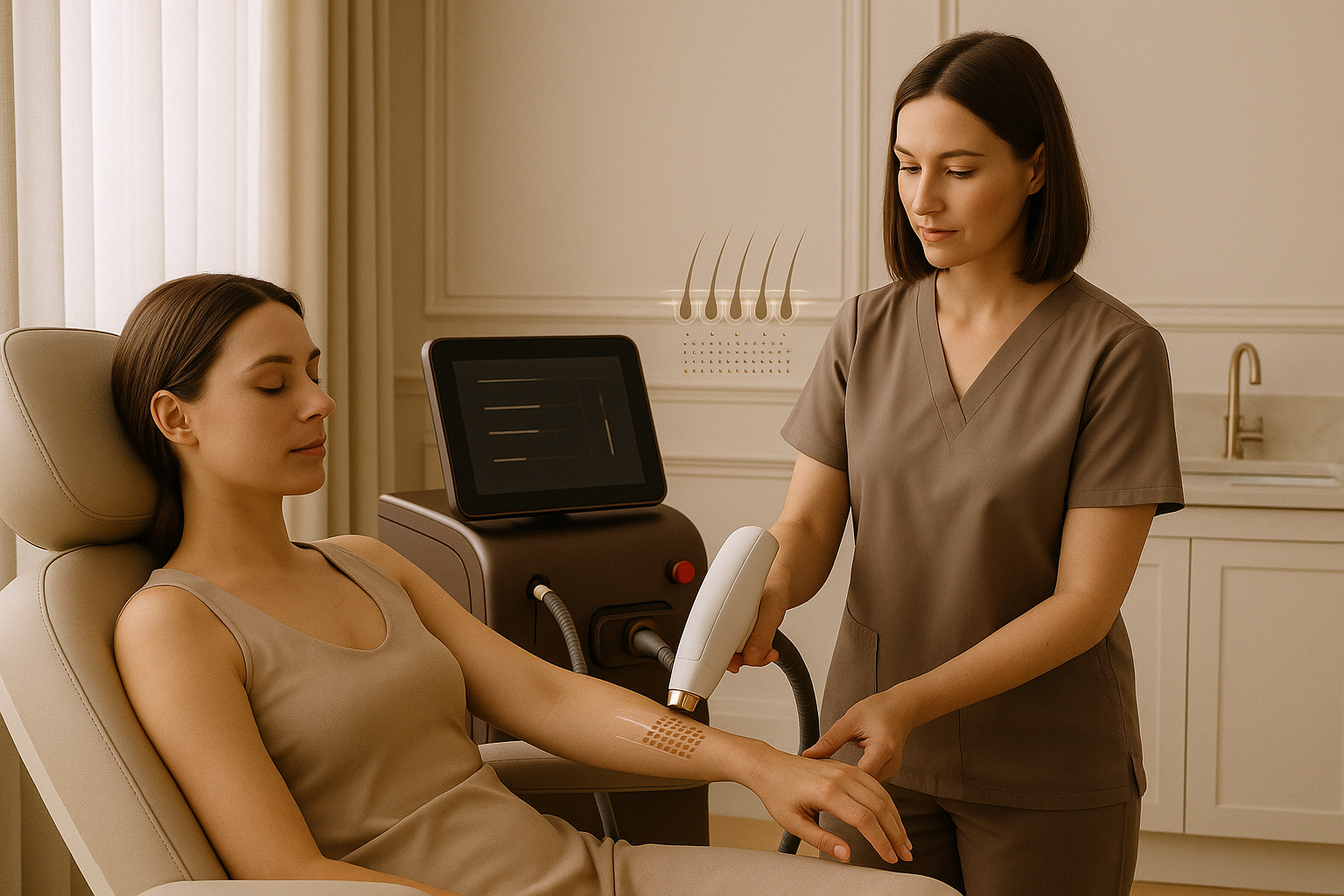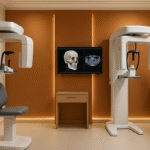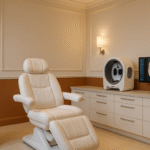Laser Hair Removal Plateau After Session Six: 11 Reasons Results Stall and How To Fix Them

Many people begin laser hair removal with a burst of progress. After the first three or four sessions, regrowth softens, patches clear, and shaving becomes less frequent. Then, somewhere around session six, progress seems to stall. New hairs still appear, the skin looks smoother but not finished, and your appointment notes start to include phrases such as maintenance or slow responder. This experience is common and it is not a sign that laser hair removal has failed. It is usually a sign that a few technical details, biological factors, or scheduling choices are out of alignment with your hair growth pattern.
This guide explains why plateaus happen and how to break through them without guesswork. It covers the hair growth cycle in plain language, the way different devices interact with skin tone and hair calibre, and the treatment parameters that determine whether a session is strong enough to permanently disable a follicle. It also explores hormones, medications, sun exposure, interval timing, and at-home device pitfalls. You will learn how to spot the difference between a temporary slowdown and a genuine plateau, how to adjust strategy safely, and when to change settings or even switch to a different laser platform. The treatment pathway described matches the approach used at SwissMed Clinic, where careful skin typing, patch testing, and incremental energy titration help keep momentum steady from the early phase through to completion.
Why laser hair removal appears to slow after session six
Laser hair removal targets melanin in the hair shaft and the hair matrix cells that sit within the follicle. When the laser pulse is delivered with sufficient energy for a sufficient time, heat travels down the hair and damages the structures that drive growth. This works best when hairs are in anagen, the active growth phase, because the hair is anchored deep and richly pigmented. Early sessions catch a large proportion of anagen hairs, which is why results seem dramatic. As treatment progresses, the remaining hairs are more likely to be in telogen or late catagen, are finer, or are scattered in areas with slower cycles. The visible change per session shrinks. If the session strength and interval are not adapted, the treatment feels as if it has stopped working.
Another reason for apparent slowdown is simple arithmetic. If you begin with thousands of hairs in a region, a large reduction still leaves a small number that feel obvious in isolation. A few coarse chin hairs that persist can overshadow the smoothness that has been achieved elsewhere. In other words, you are noticing the exceptions rather than the rule, which is natural. The way through this is to identify why those exceptions survive and to target them precisely.
The 11 most common reasons for a plateau, with solutions that work
1. The interval is no longer matched to your hair cycle
Early in a course, short intervals keep catching new anagen recruits. As density falls, cycles stretch. If you continue at the same fixed gap, you can miss the optimal window and treat too many resting hairs. The session then feels weak and regrowth seems unchanged.
How to fix it: switch from a rigid calendar to a response-based interval. For face and neck, aim for roughly four to six weeks until later in the course when spacing may extend to six to eight weeks. For body areas such as underarms and bikini, five to seven weeks is common early on, stretching to seven to ten weeks as density drops. Legs often need longer gaps. Your provider should check stubble pattern, not just the calendar. At SwissMed Clinic, intervals are adjusted after a quick visual and tactile assessment rather than booked on autopilot.
2. Fluence is too low for the remaining hair calibre
As hairs become finer, the energy threshold for effective heating changes. Some clinics keep the same settings out of caution, which can be appropriate at the start, but a plateau often means the fluence is now below the level required for remaining follicles.
How to fix it: safe titration. After a patch test, increase fluence stepwise while monitoring skin response. Use larger spot sizes where appropriate because they deliver deeper energy deposition. On suitable skin types, diode or Alexandrite platforms may allow higher fluence for fine hairs, while on darker skin tones a long-pulse Nd:YAG provides safer energy delivery at depth. SwissMed practitioners document effective fluence by area and hair calibre so that progress is not lost between sessions.
3. Pulse duration does not match hair thickness
Thicker hairs need longer pulses to heat the follicle without burning the surface. Finer hairs can respond better to shorter pulses because the target cools quickly. Using a one-size-fits-all pulse width can produce a flat line in results.
How to fix it: match pulse width to the target. For coarse bikini or male beard hair, longer pulses with adequate fluence protect the epidermis while still delivering heat. For finer late-course arm hair, shorter pulses can improve efficacy. This adjustment is not a guess. It is based on hair diameter and skin feedback during patch testing.
4. Inadequate overlap and inconsistent technique
Lines that are spaced too far apart or rushed passes leave untreated gaps. Early on, density hides this. Later, the remaining hairs line up with the misses and look stubborn, even though the cause is simply mapping.
How to fix it: insist on visible, planned overlap. A good operator uses gridlines, feedback from the handpiece window, and consistent pressure. Movement speed is matched to the device repetition rate so that every centimetre receives the intended dose. A clear gel or contact plate can help maintain even coupling on curved areas.
5. Missed shaving window or incorrect pre-treatment
If hair is too long at the time of treatment, energy is wasted on the shaft above the skin rather than travelling into the follicle. If it is shaved too early, stubble can reappear and scatter energy. Waxing or plucking between sessions removes the very target the laser needs.
How to fix it: shave within 12 to 24 hours of your session unless your provider requests a different window. Avoid waxing, threading, or epilating for at least four weeks before and during your course. Trim long areas if needed to reduce smoke and improve comfort, but do not remove the root.
6. Sun exposure and fake tan confusing the device
Recent sun exposure increases epidermal melanin. Some devices react by stepping down energy to avoid burns. The result is a session that feels gentle and leaves more follicles active. Self-tan can cause similar issues, particularly on devices that use skin sensors.
How to fix it: stay sun-safe and honest. Use broad-spectrum SPF on exposed areas during a course and disclose any sun or tanning product use. If you arrive tanned, a conservative session may be the only safe option, but it will be less effective. Rescheduling is often better than compromising settings.
7. Hormonal drivers that keep recruiting new hairs
Androgens influence hair growth on the face, chest, abdomen, and inner thighs. Conditions such as polycystic ovary syndrome, certain medications, or life stages can increase activity in dormant follicles. You may reduce original hairs successfully yet still see new ones over time. This feels like a plateau but is really fresh recruitment.
How to fix it: add medical context. Share any cycle changes, weight shifts, new medications, or family history of hirsutism. If there are hormonal drivers, expect a longer course and occasional maintenance. The strategy becomes control rather than a rigid finish line. Coordination with a clinician can help, and SwissMed’s dermatology team can advise when endocrine assessment is sensible.
8. Device mismatch for skin tone or hair type
Different lasers have different strengths. Diode and Alexandrite are powerful for lighter skin with dark hair. Nd:YAG is the safer choice for darker skin types because it targets deeper and bypasses much of the epidermal pigment. Using a device at the edge of its comfort zone can lead to timid settings and slower results.
How to fix it: choose a platform that suits your skin and hair, then drive it properly. If you have a darker tone and are being treated with a device that struggles on those settings, discuss a switch to a long-pulse Nd:YAG. If you have lighter skin and very fine residual hair, an Alexandrite or high-spec diode might be superior in late stages. At SwissMed, platform choice is part of the consultation rather than a fixed package, which removes pressure to persevere with a suboptimal device.
9. Expectation gap about permanence and density
Laser hair removal reduces permanent hair growth. It does not promise zero follicles forever. Body areas reduce more predictably than hormonal facial zones. A plateau sometimes reflects the natural end point for that area, where remaining hairs are either very fine or are sporadically recruited.
How to fix it: define success in measurable terms. For example, a reduction that allows shaving once every three weeks rather than every second day is a meaningful win, even if a handful of fine hairs persist. Agree on a maintenance plan that preserves results rather than chasing perfection with endless sessions.
10. At-home devices interfering with clinic timing
Home devices have lower energy for safety. They can soften regrowth but often demand high frequency use that overlaps with clinic schedules. If used between professional sessions, they can disrupt the cycle you are trying to catch or irritate the skin and force conservative settings next time.
How to fix it: pick one route. If you are investing in clinic-grade treatment, pause home devices during the course. Use them only as a long-term top-up once the professional plan is complete and your provider agrees.
11. Post-care that allows inflammation or ingrowns to persist
Inflamed follicles and ingrown hairs can mimic active growth. Scratching, tight clothing, or heavy occlusive products immediately after treatment may trap hairs and delay shedding. The area looks bumpy and you assume the laser missed.
How to fix it: treat your skin kindly for 48 hours. Keep the area cool and clean. Avoid hot showers, gyms, and heavy fragranced products. Use light, non-comedogenic moisturisers. If ingrowns are a pattern for you, introduce gentle chemical exfoliation a few days after each session, as advised by your clinician. This promotes clear exits for shedding hairs.
How to tell a true plateau from a temporary slowdown
A true plateau persists across two or more sessions despite good scheduling and careful settings. Temporary slowdowns are usually linked to a recent holiday, a medication change, a single long interval, or a missed shave window. Track your experience in simple terms. Note shaving frequency, hair texture, and visible patches on a calendar. If you are still shaving much less often than before and the hair is softer, you are improving, even if it feels slow. If you are shaving as often as you did at the start, and hairs look similar in thickness in the same area, you need a plan change.
A practical pathway to restart progress
Start with a focused review of one area, not the whole body. Confirm your skin type and recent sun exposure. Re-assess the device choice. Perform a short patch test with two or three fluence options and suitable pulse widths. Wait the appropriate period, often 15 to 20 minutes for immediate skin feedback and longer for delayed reactions. Choose the highest safe setting from the test. Map the area with clear overlap and steady handpiece contact. Adjust interval based on regrowth, not habit. Address hormonal context if facial zones remain stubborn. Repeat the stronger, well mapped session before deciding to switch platforms. This single-area test often reveals that energy, pulse, mapping, or interval were the only barriers.
Special notes for different body sites
Facial areas grow in fast cycles and are influenced by hormones. They respond well early, then demand patience and maintenance. Underarms and bikini often show dramatic early wins because of coarse hair and rich melanin. They can plateau if overlap is inconsistent because curvature makes mapping tricky. Lower legs grow more slowly and often need longer gaps to catch anagen. Male backs and shoulders can recruit new hairs over time, so realistic expectations and a maintenance plan are important. Understanding these site differences prevents frustration and keeps you on the right interval.
Safety first while you optimise
Pushing settings without a safety framework is not clever. The skin is the gatekeeper. If you see greying or whitening of the skin during shots, immediate frosting that does not settle, or blistering, stop. Cooling, gel use, and proper handpiece contact matter as much as numbers on a screen. Inform your provider about retinoids, photosensitising antibiotics, or acne treatments, because they change the safe window for energy delivery. If you are prone to pigmentation changes, slower titration may be necessary. The goal is steady, cumulative progress without setbacks.
What to do if you think you need a different laser
Ask your provider to explain why your current platform is suited to your skin tone and hair type. If the answer is vague, seek a second opinion. A switch is sensible when safety limits on the current device prevent effective energy for your target, or when a platform with a different wavelength and pulse structure offers a clear advantage for late-stage fine hair. Switching does not discard your previous progress. It builds on it. At SwissMed, diode and Nd:YAG platforms are available with contact cooling, which allows more options across skin types while preserving comfort.
Pre-treatment checklist that supports consistent results
Plan your shave for the day before. Arrive with clean skin free from heavy creams, deodorants, or oils. Avoid waxing or epilating for at least four weeks before the session. Protect the area from the sun and stop self-tanning products for two weeks prior. Bring a list of medications and note any recent hormonal changes. Photograph tricky areas such as the chin in neutral lighting so you can compare patterns over time. These simple habits help your provider choose the right settings on the day.
Post-treatment care that prevents setbacks
Expect mild redness and warmth that settles within a few hours. Keep the area cool and clean for 48 hours. Avoid heavy sweating, hot yoga, or hot baths. Choose breathable clothing over tight elastics that rub. Use a gentle, fragrance-free moisturiser. Do not pick ingrowns. If they occur, use a mild salicylic or lactic acid product a few days later as advised. Avoid direct sun until the skin has fully settled and use broad-spectrum SPF on exposed areas during your course. These steps reduce complications and keep your sessions effective.
When to pause or stop
Stop and seek review if you develop persistent darkening or lightening of the skin, blistering, or crusts that do not settle within a few days. Also pause if you begin a new photosensitising medication, or if you experience a major hormonal shift such as pregnancy. Hair removal can wait. Skin health comes first. A brief pause is better than treatment that pushes through and causes a setback.
What success looks like and how to maintain it
Success is not defined by absolute zero hairs. It is defined by hair-free weeks, soft regrowth when it appears, and a shaving routine that is dramatically easier to live with. For many areas, this means a course of sessions over several months followed by maintenance every few months or longer. Facial zones influenced by hormones may need occasional top-ups. Maintenance is not failure. It is how biology works. A plan that acknowledges this will feel sustainable rather than frustrating.
How SwissMed adds value without overpromising
SwissMed Clinic uses a skin typing consultation that includes colour matching, hair calibre assessment, and a review of medical history. Device choice between diode and Nd:YAG is made with safety and efficacy in mind. Cooling systems and contact gels improve comfort and reduce surface risk. Patch testing is routine for new areas and for significant setting changes. Intervals are set based on visible regrowth rather than a fixed package timeline. If you are experiencing a plateau, this framework helps uncover the reason and restores progress without unnecessary sessions.
Frequently asked questions
Why is shedding inconsistent after some sessions?
Shedding typically begins seven to fourteen days after treatment. Variability is normal because hairs are at different points in their cycles. Gentle exfoliation a few days after treatment helps hairs exit. If an area shows almost no shedding, settings may have been too low or overlap incomplete.
Can laser cause more hair to grow?
True stimulation is rare and tends to occur in areas with very fine vellus hairs at the edges of treatment zones. If it happens, technique can be adjusted and the area narrowed. Often what looks like stimulation is simply recruitment driven by hormones, particularly on the face.
How many sessions do I need if I have PCOS?
There is no fixed number. Expect more sessions and plan for maintenance. The aim is to control growth to a manageable level, not to promise permanent removal in hormonally active zones.
Is it safe for darker skin?
Yes, with the correct platform and parameters. Long-pulse Nd:YAG lasers are designed to bypass much of the epidermal pigment and target deeper structures safely. Patch testing and conservative titration protect the skin while still making progress.
Do I need to stop retinoids or acids?
Topical retinoids and strong acids can make the skin more sensitive. Your provider may advise pausing them a few days before and after sessions on the treated area. Oral retinoids require a longer washout. Always disclose active skincare and medications.
Why are chin hairs so stubborn
The chin is heavily influenced by androgens and is a small, curved area that demands precise mapping. A handful of coarse follicles can persist and require targeted passes, higher energy within safety limits, and a readiness to plan maintenance.
Book an At Home GP Visit
If your results have slowed and you want a clear plan to restart progress, book a consultation with SwissMed Clinic. You will receive a skin typing assessment, an honest review of your current settings and intervals, and a personalised strategy that matches device, pulse, and schedule to your hair cycle. The aim is steady, safe momentum until you reach a level of hair freedom that fits your life.







